Anesthesia II: Ruminant, Camelid, and Swine Anesthesia
1/138
There's no tags or description
Looks like no tags are added yet.
Name | Mastery | Learn | Test | Matching | Spaced |
|---|
No study sessions yet.
139 Terms
Ruminant Anesthesia (Temperament and economics)
•Ruminants don't undergo general anesthesia as often as horses and small animals
•Must consider drug withdrawal times in food and milk-producing animals
Ruminants don't undergo general anesthesia as often as horses and small animals
•Don't require general anesthesia as often due to their calm nature
•Many surgeries are performed using local or regional anesthetic techniques and physical restraint
Must consider drug withdrawal times in food and milk-producing animals because of
FARAD
FARAD:
free service to veterinary practitioners to assist in the prevention of drug residues in animal-derived human foods
FARAD stands for
Food Animal Residue Avoidance Database
Local anesthesia
"L block"
Regional
paravertebral anesthesia or IVRA (IV regional anesthesia)
IVRA is also considered
Regional anesthesia performed so cow is standing while procedure being done

Ruminant Anesthesia Equipment
•Special equipment is needed because of their size
•Tilt tables, head gates, hoists, transporters
•Small animal equipment can be used for small ruminants (sheep, goats, calves)
Ruminant Anesthesia Anatomy and physiology
•Adult cattle produce 25 - 38 GALLONS of saliva/day
•Ruminants are prone to regurgitation and bloat during general anesthesia
Adult cattle produce 25 to 38 GALLONS of saliva/day
•Production generally not inhibited by anesthesia
•Aspiration risk if airway is not protected
Ruminants are prone to regurgitation and bloat during general anesthesia
•Fermentation is only slightly deceased by anesthesia
•Unable to eructate when unconscious
Ruminants: Weight Range
1. Range from a few kgs (lambs, babies) to over 1000kg (adult bull)
2. If greater than 150kg, need access to large animal equipment
Regurgitation can occur at any stage of general anesthesia, most commonly during light or deep planes
Clinical signs: distended tight abdomen, decreased BP, increased HR, decreased ventilation
Humans produce 1 - 1.5L of saliva/day =
0.3 - 0.4 gallons
Eructate =
burp
A bloated rumen can put pressure on the
diaphragm, aorta, and vena cava resulting in decreased respirations and BP
Ruminant digestion
1. Rumen
2. Reticulum
3. Omasum
4. Abomasum (true glandular stomach)
5. Known to "chew cud" - regurgitate, remasticate, etc.
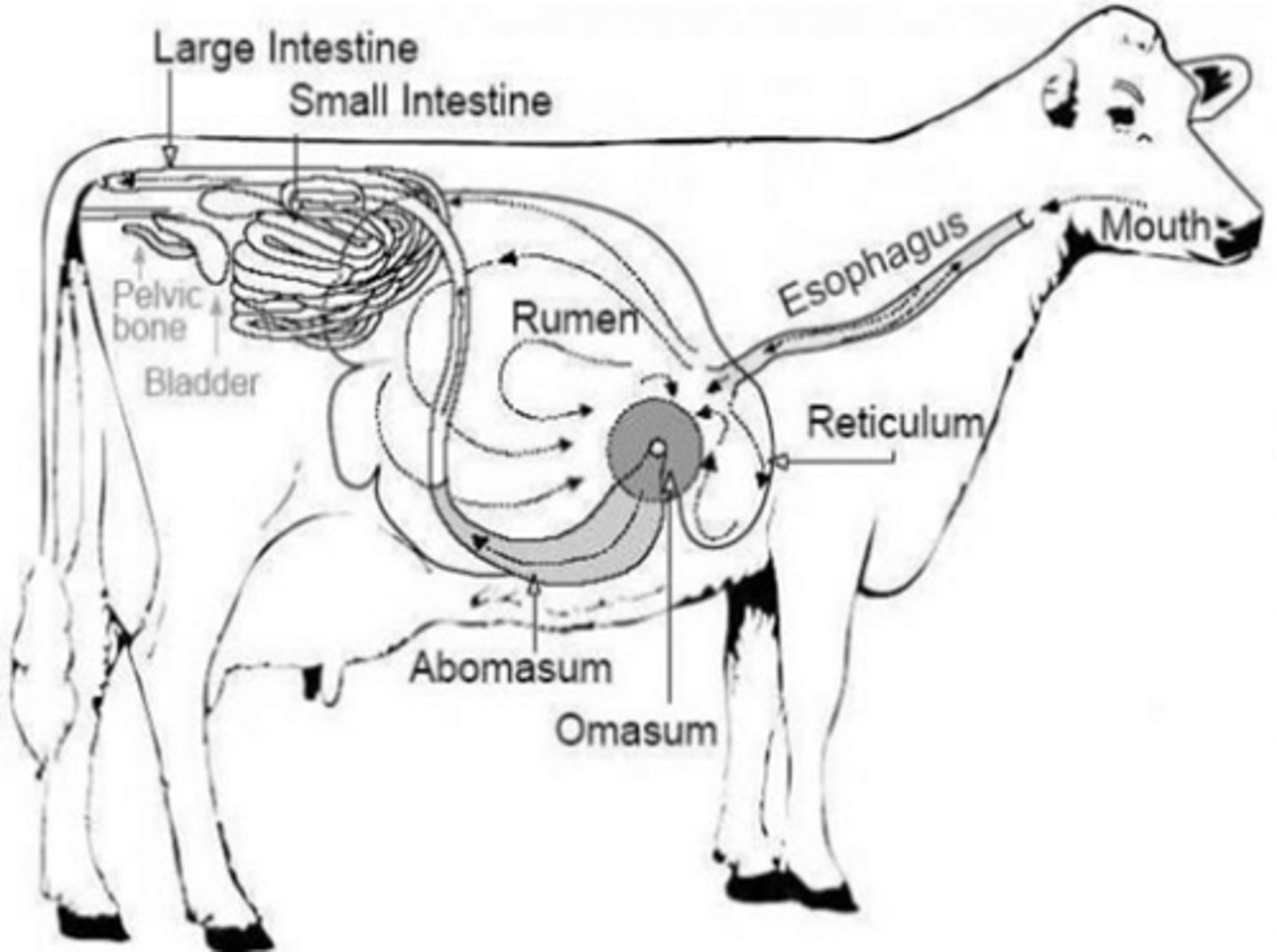
Another form of restraint
What is the image showing?

Patient Preparation (Requirements)
•Use the same principles as with small animals
•Assess, prepare, and weigh the patient
•Make sure the patient is fasted to prevent bloat
•Prepare equipment for and place IV catheter
Patient Preparation (Calculations)
•Calculate the volume of each agent to give including fluid administration rates
•Review the oxygen flow rates
•Prepare equipment required to administer drugs, fluids, intubation, and monitoring equipment
•Assemble and test the anesthetic machine and ventilator
Make sure the patient is fasted to prevent bloat
Reduces the size of the rumen and decreases microbial activity (less gas production)
Calves and small ruminants =
fast from food for 12 hours and water for 8 hours
Large adult cattle =
fast from food and water for 24 hours or longer
Cannot guarantee fasting if an
emergency (non-elective) procedure
Selecting a Protocol and Equipment Prep (Factors to consider)
•Minimum patient database
•Patient physical status class
•Ill, geriatric, pediatric, & compromised patients (status classes P3 - P5) require modified protocols
•Type and duration of procedure
Selecting a Protocol and Equipment Prep (Equipment preparation)
•Make sure all equipment is present before induction
•Check circle system & ventilator of machine
•Warming equipment available for small ruminants and calves
•Crash cart for emergency drugs and equipment
Ruminant General Anesthesia
•Premedication or sedation
•May need tranquilizers for aggressive, excited, or stressed animals
•Ruminants are VERY sensitive to xylazine
•Anticholinergic drugs cause saliva to become thick and ropy ☹
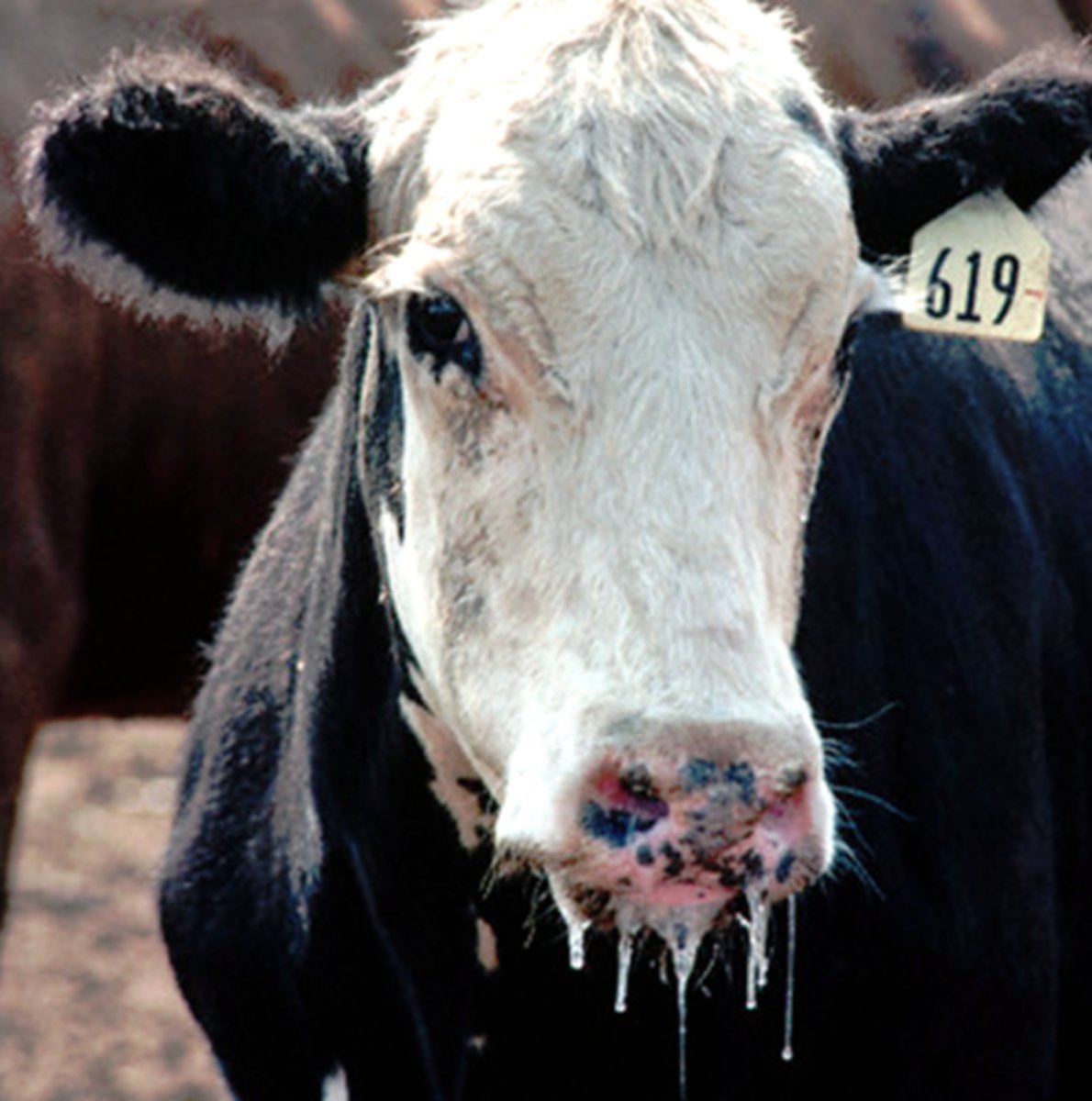
Thicker mucus is
- easier to aspirate and can cause an airway obstruction
- anticholinergics are reserved for treatment of arrhythmias and for CPR

Ruminant General Anesthesia: Premedication or Sedation
•Tranquilizers generally not needed prior to IV catheterization and induction in calm and tractable animals
•May need tranquilizers for aggressive, excited, or stressed animals
Premedication is still beneficial if anesthesia needed due to
decreasing the dose of induction agent needed, muscle relaxation, and analgesia
Ruminant General Anesthesia: May need tranquilizers for aggressive, excited, or stressed animals
Acepromazine may increase regurgitation risk
Ruminant General Anesthesia: Ruminants are VERY sensitive to xylazine
Require 1/10th of the dose given to horses
IV Induction should be done in a
special padded area, in a transporter, on a tilt table
What is the goal of IV induction in ruminants?
•Get to unconsciousness rapidly with minimal injury
•Get immediate control of the airway to reduce aspiration risk
How is administration of IV induction done on ruminants?
•Double drip: ketamine and guaifenesin rapid IV to effect
•Larger ruminants: IV agent bolus
•Smaller or compromised ruminants: IV agent to effect
•Propofol works for small ruminants/camelids only, generally too expensive for adult cattle
Ruminations IV Induction and Positioning
•Sternal recumbency for intubation
•Watch for regurgitation
•If regurgitation occurs, position the head lower than the pharynx to prevent aspiration
•Check vital signs and intubate
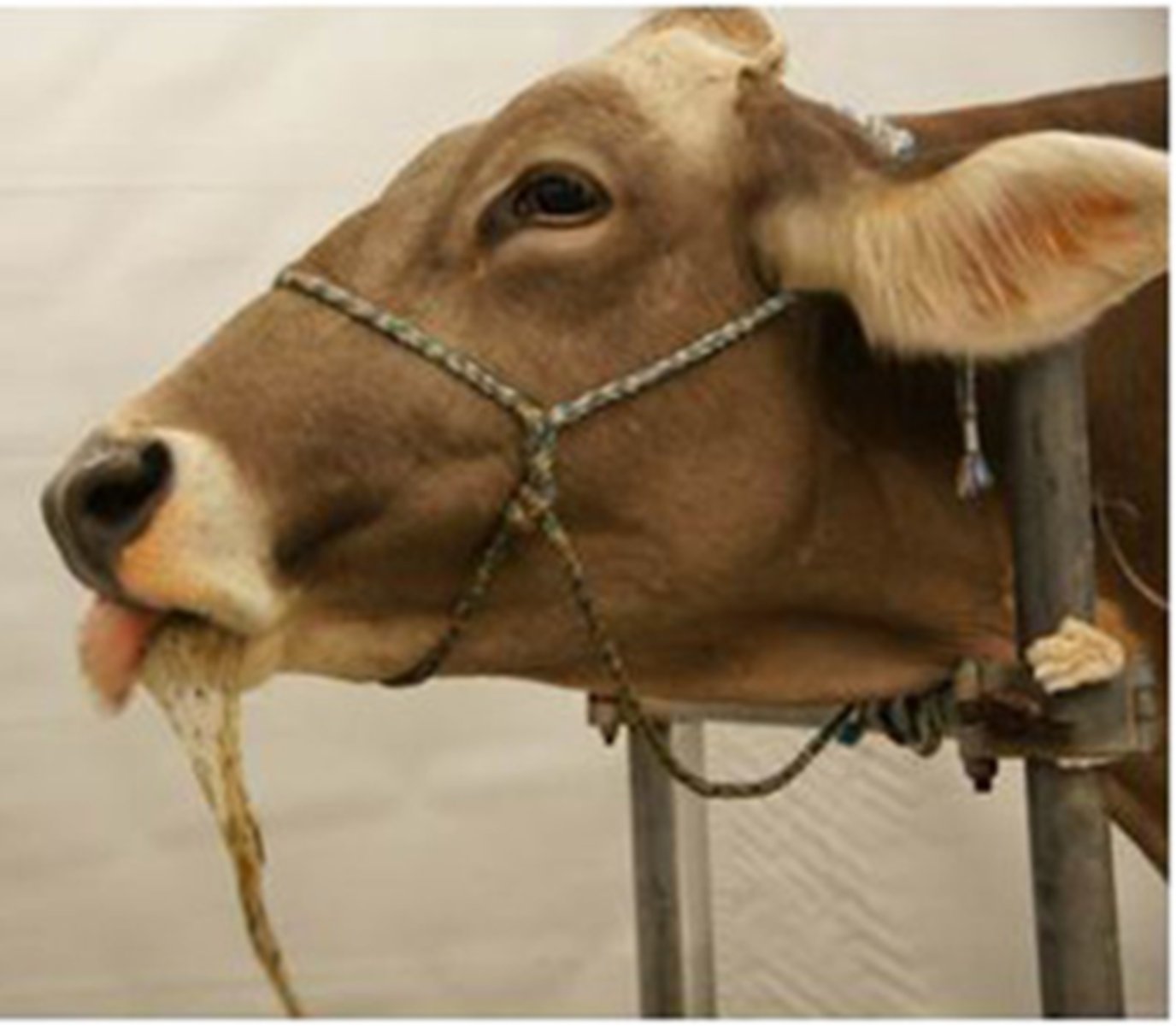
Ruminant Endotracheal Intubation Equipment
•Appropriately sized endotracheal tubes
•Stylette (small ruminants and calves only)
•Mouth gag to hold the jaws apart (adult cattle only)
•Laryngoscope (small ruminants and calves)
•Gauze sponge to grasp the tongue (optional)
•A syringe to inflate the cuff
•Long forceps and suction
Ruminant Endotracheal Intubation Equipment: Appropriately sized endotracheal tubes
22, 24, 26, or 30-mm tube typically used for adult cattle
Ruminant Endotracheal Intubation Equipment: A syringe to inflate the cuff
-10 mL for small ruminants and calves
-60 mL for adult cattle
Ruminant Endotracheal Intubation Equipment: Prep 2 ET tubes
the anticipated size and then one size smaller
Endotracheal Intubation Equipment: Long forceps to
remove feed material if present
Endotracheal Intubation Equipment: Suction to
remove liquid that is regurgitated if present
Can apply a small amount of sterile water-soluble lube onto the tube
but is
not essential for adult cattle
Intubation of Small Ruminants & Calves (Stylette)
•Small oral opening and thick caudal half of tongue make visualization of larynx challenging
•Use of a stylette protruding beyond the end of the tube results in better visualization of the larynx
•Just using the tube on its own without a stylette, the tube will block the view of the larynx
Intubation of Small Ruminants & Calves (Advance ET tube)
•Head extended, tongue gently pulled forward, laryngoscope is placed to visualize the larynx
•Pass stylette into airway
•Pass endotracheal tube over stylette and into the larynx
•Remove stylette and inflate the cuff
The thick caudal half of the tongue is particularly seen in
goats and sheep
Calf Intubation
- Head held in an extended position. Laryngoscope directly visualizes the larynx.
- The tongue of ruminants, particularly sheep and goats, has a raised area in the caudal portion that makes correct positioning of the laryngoscope more difficult compared to small animals.

A stylette, which is pre-placed within
The tube is then advanced over the stylette into the trachea. The stylette can then be removed.
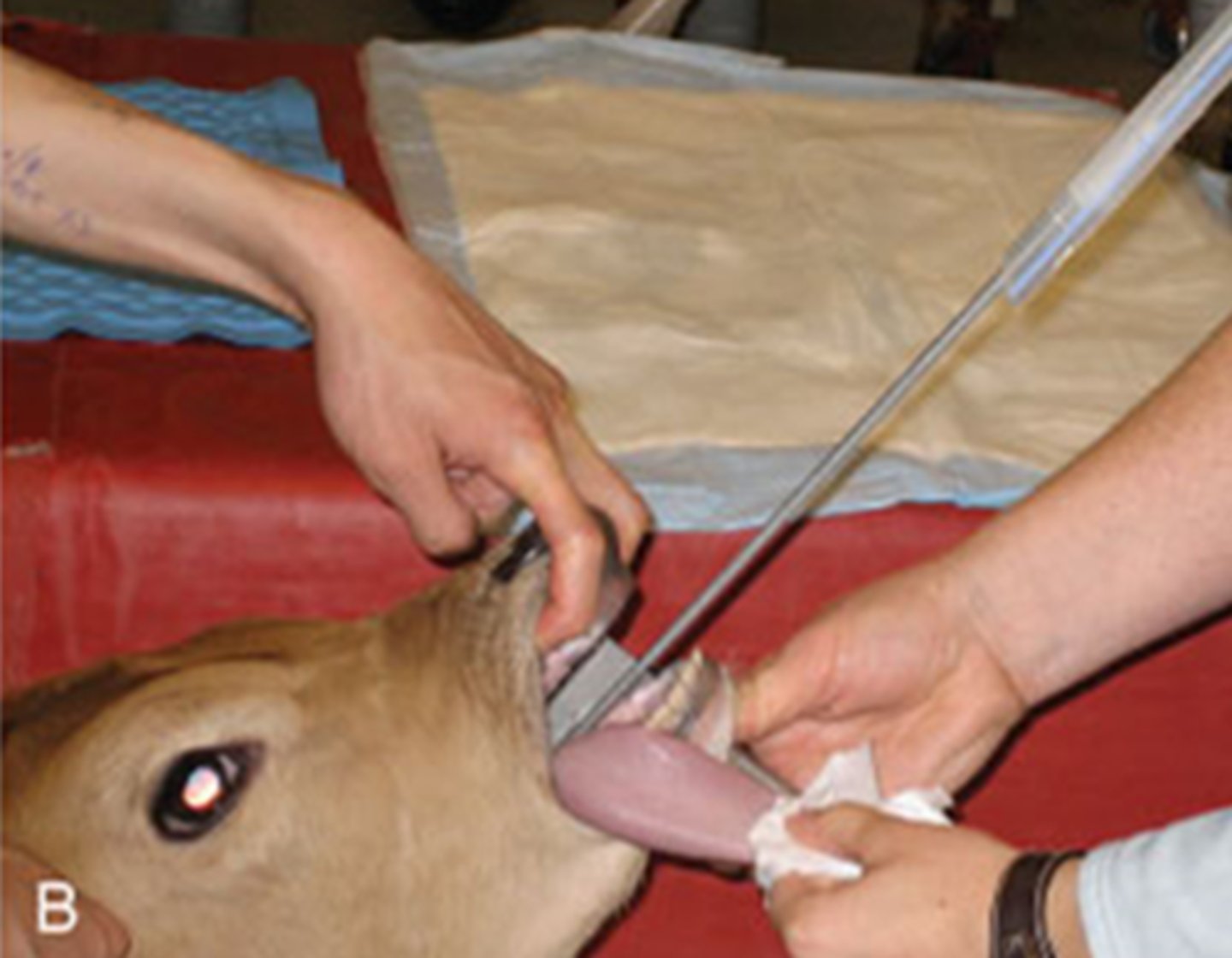
Intubation of Adult Cattle is done
blindly
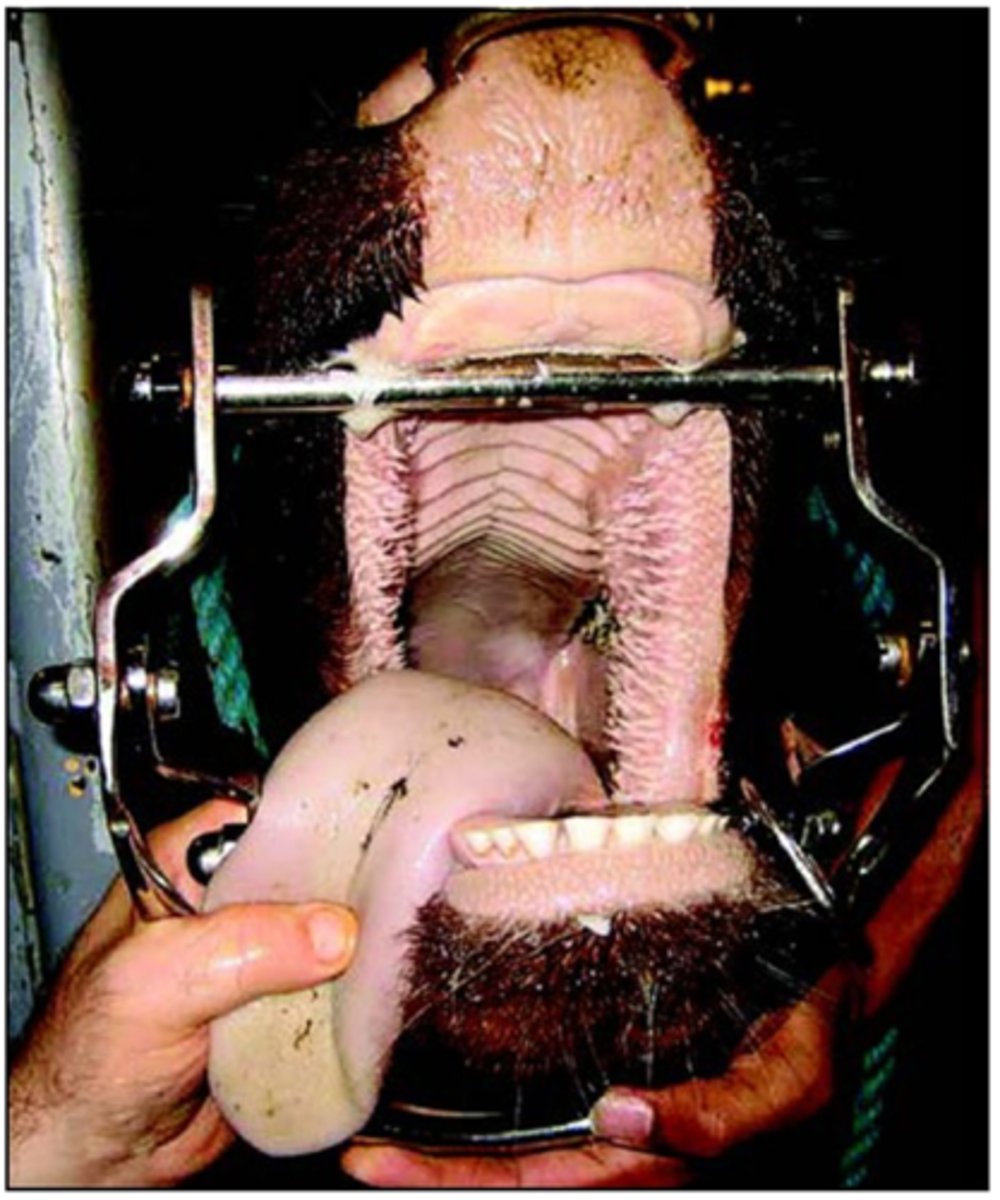
Intubation of Adult Cattle is done blindly
•Mouth gag is placed and head is extended by the assistant
•Anesthetist protects endotracheal tube cuff with non-dominant hand
•Using non-dominant hand, the anesthetist palpates the larynx with the fingers and directs the endotracheal tube into the larynx, while advancing the tube with the dominant hand
•Inflate the cuff and remove the mouth gag
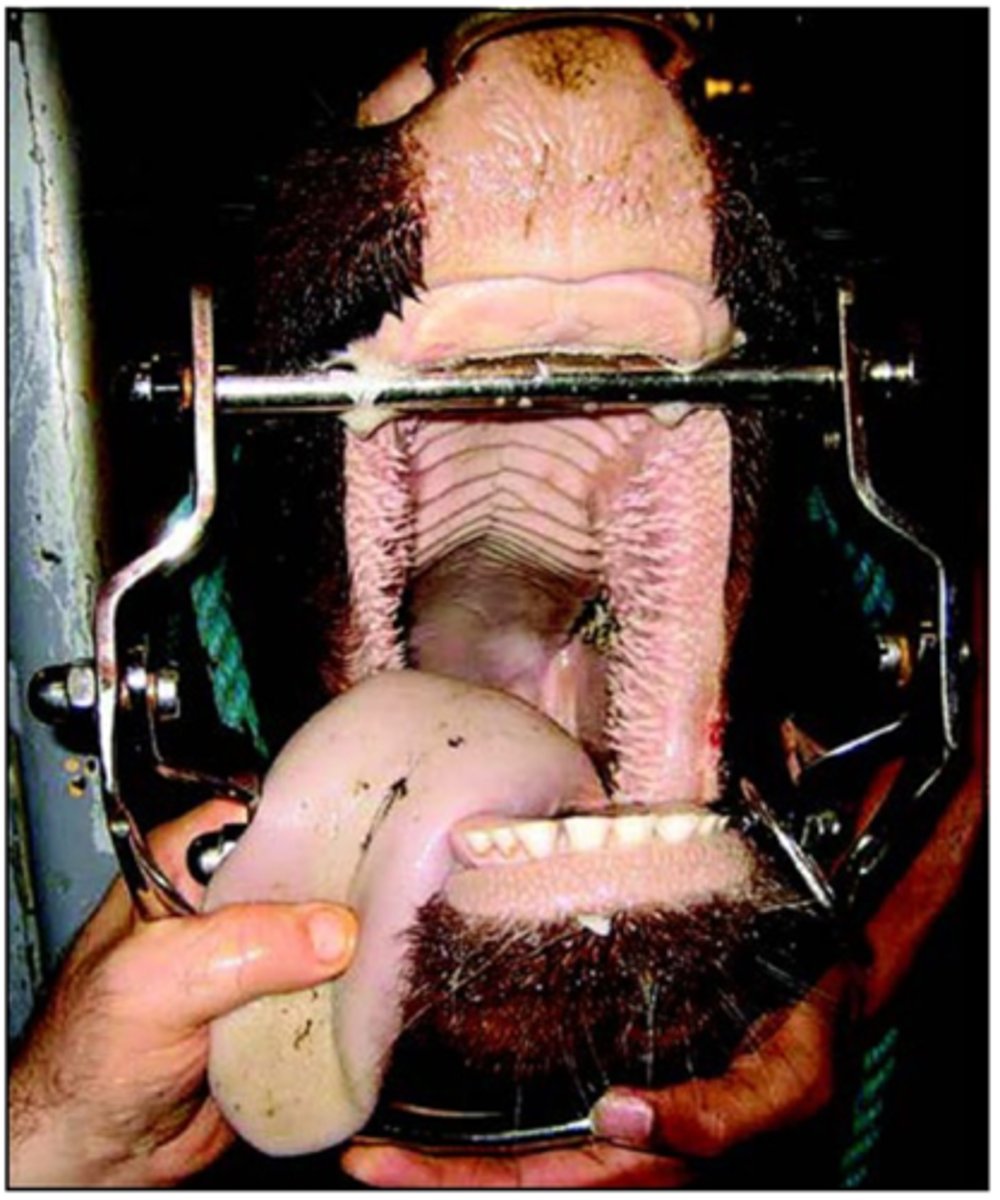
Adult Cattle: A mouth gag will keep the
- mouth open and protect the arm
- hand of the person intubating if the cow becomes too light
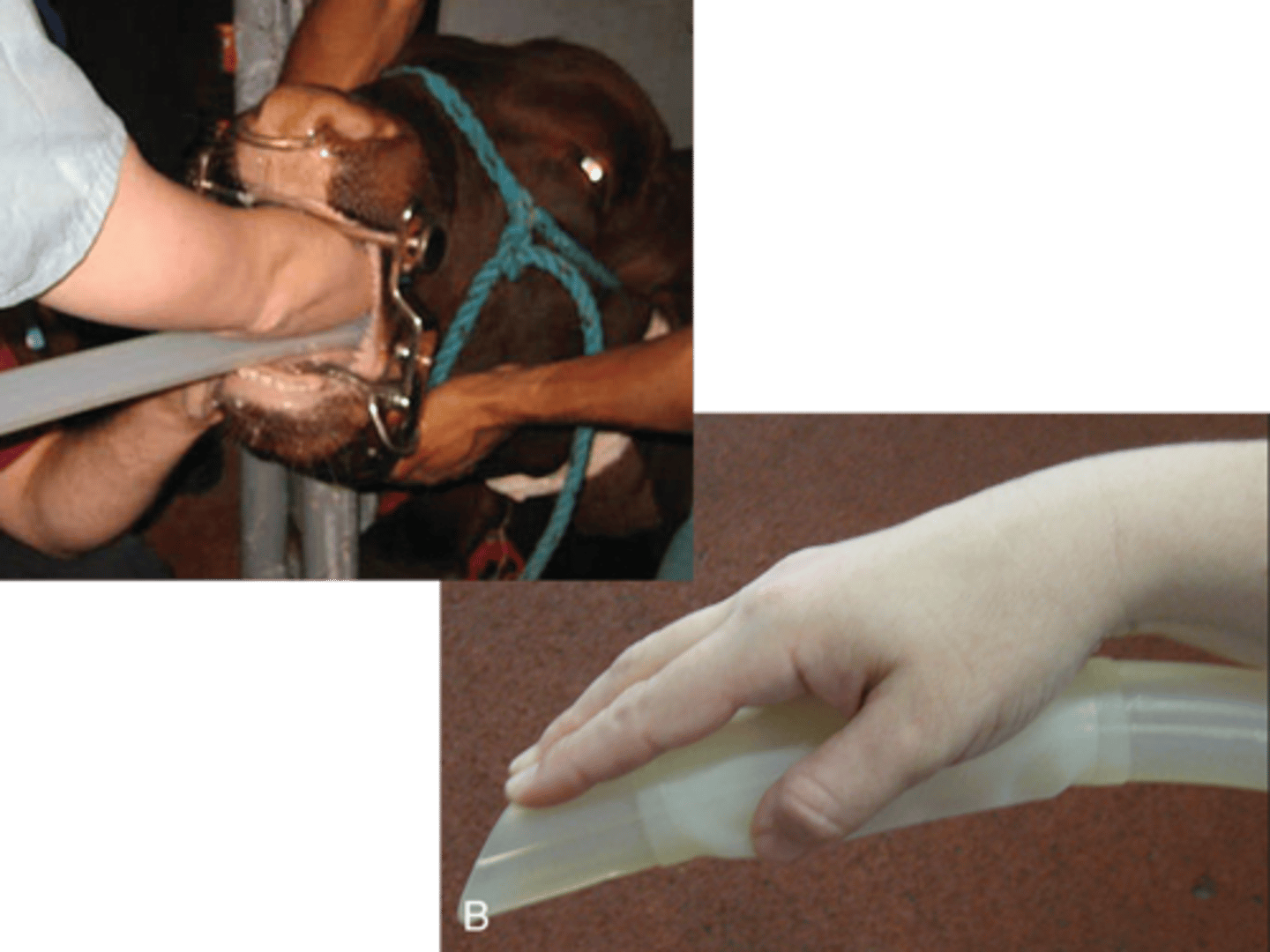
Adult Cattle: The tube is secured by
tying it to the halter or around the muzzle

Adult cattle intubation
What is this picture showing?
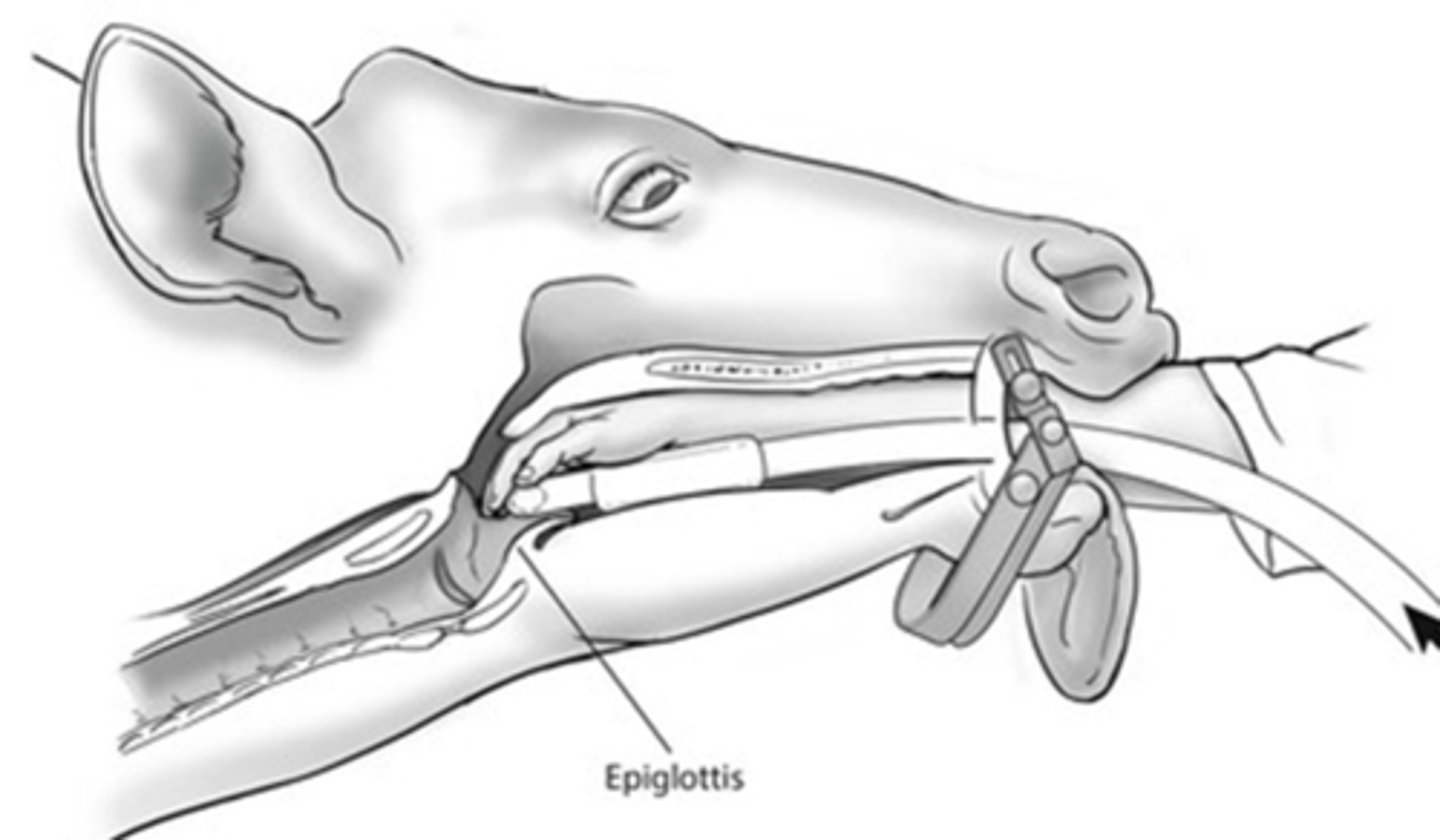
Maintenance of Anesthesia for Cattle (With inhalant agent)
•Small ruminants and calves: similar to small animals
•Adult cattle: similar to horses
•Ruminants tend to hypoventilate and breathe rapidly and shallowly (like a panting dog)
•Place on ventilator
Maintenance of Anesthesia for Cattle (With IV agent (TIVA)
•Reserved for short (< 20-minute) procedures in healthy, non-intubated patients
•Can also be used to extend anesthesia in an intubated patient
•Double drip is commonly used
Maintenance of Anesthesia Considerations
1. 1.5 - 2.5% isoflurane
2. Healthy ruminants typically have very few problems during the maintenance phase of anesthesia
3. BP usually well maintained, ear arties often catheterized for direct BP monitoring and blood gas analysis for long surgeries
4. This type of breathing pattern may lead to hypoxemia and difficulty keeping the patient anesthetized because of inadequate delivery of inhalant anesthetic to the lungs
5. Double drip = ketamine and guaifenesin
Patient Positioning, Comfort, and Safety
•Use same principles as for small animals
•Additional concerns
•Position ruminants with mouth lower than pharynx
•Allows drainage of saliva and any regurgitated material from the mouth, preventing build up in the pharynx
•Reduces aspiration risk
•Provide padding to prevent neuropathy and myopathy as in horses
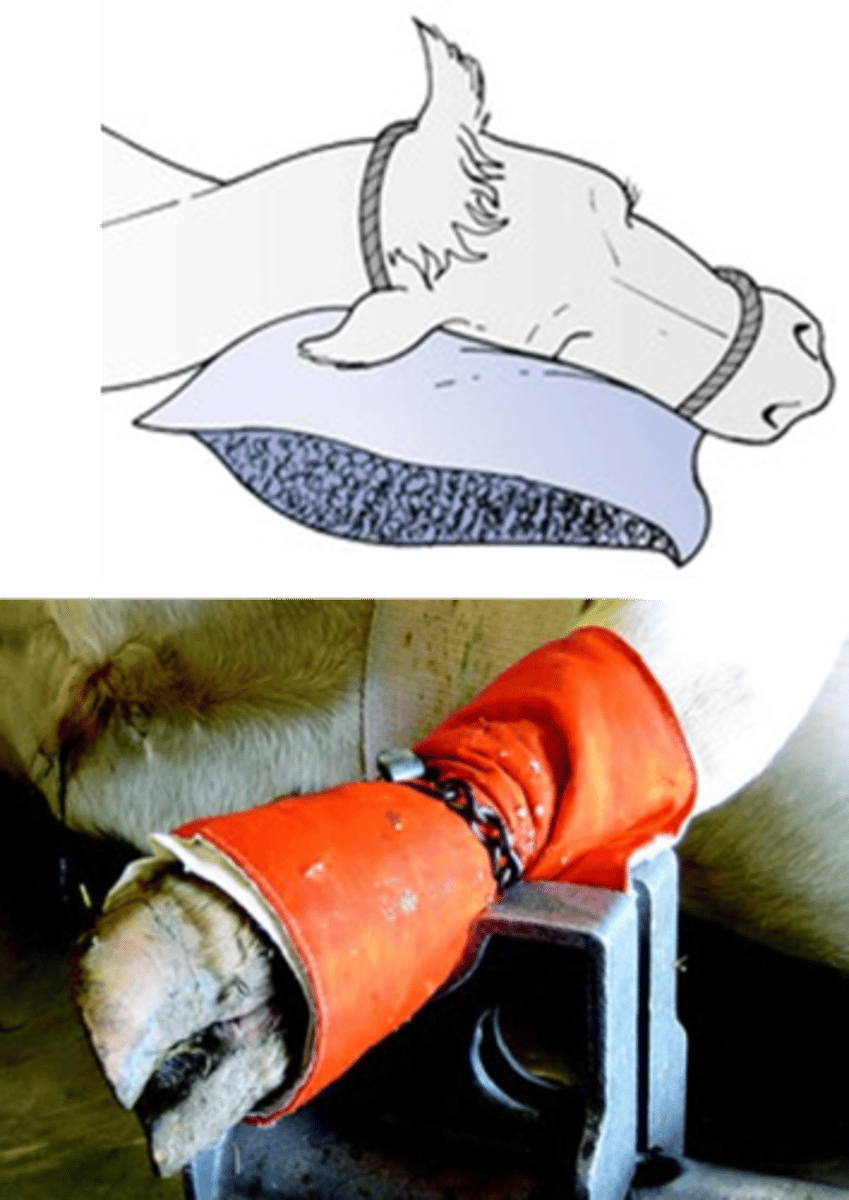
Ruminants are not predisposed to developing
neuropathies and myopathies like horses, but still important to do as a precaution
Ruminant Anesthetic Recovery
•Patient transferred to padded recovery stall
•Monitor for signs of excessive bloating
•Keep cuff inflated or partially inflated to prevent aspiration when removing ET tube
•Leave unattended after patient is lying in sternal recumbency without support
•Don't need to withhold food or water
Ruminant Anesthetic Recovery: Patient transferred to padded recovery stall
•Place in sternal recumbency
•Make sure mouth is lower than pharynx
•Allows eructation and drainage while regaining consciousness
Ruminant Anesthetic Recovery: Keep cuff inflated or partially inflated to prevent aspiration when removing ET tube
Extubate when strong swallowing movements or coughing appear
Ruminants tend to have a
smooth recovery
Signs of excessive bloating:
visibly large, distended abdomen that feels tight to the touch
Before and after tube removal, keep the neck in a natural but slightly
extended position to protect the airway
If having difficulty removing the tube from the
remove some more air from the cuff and try again
During recovery, ruminants are maintained in sternal by
an assistant to allow for eructation
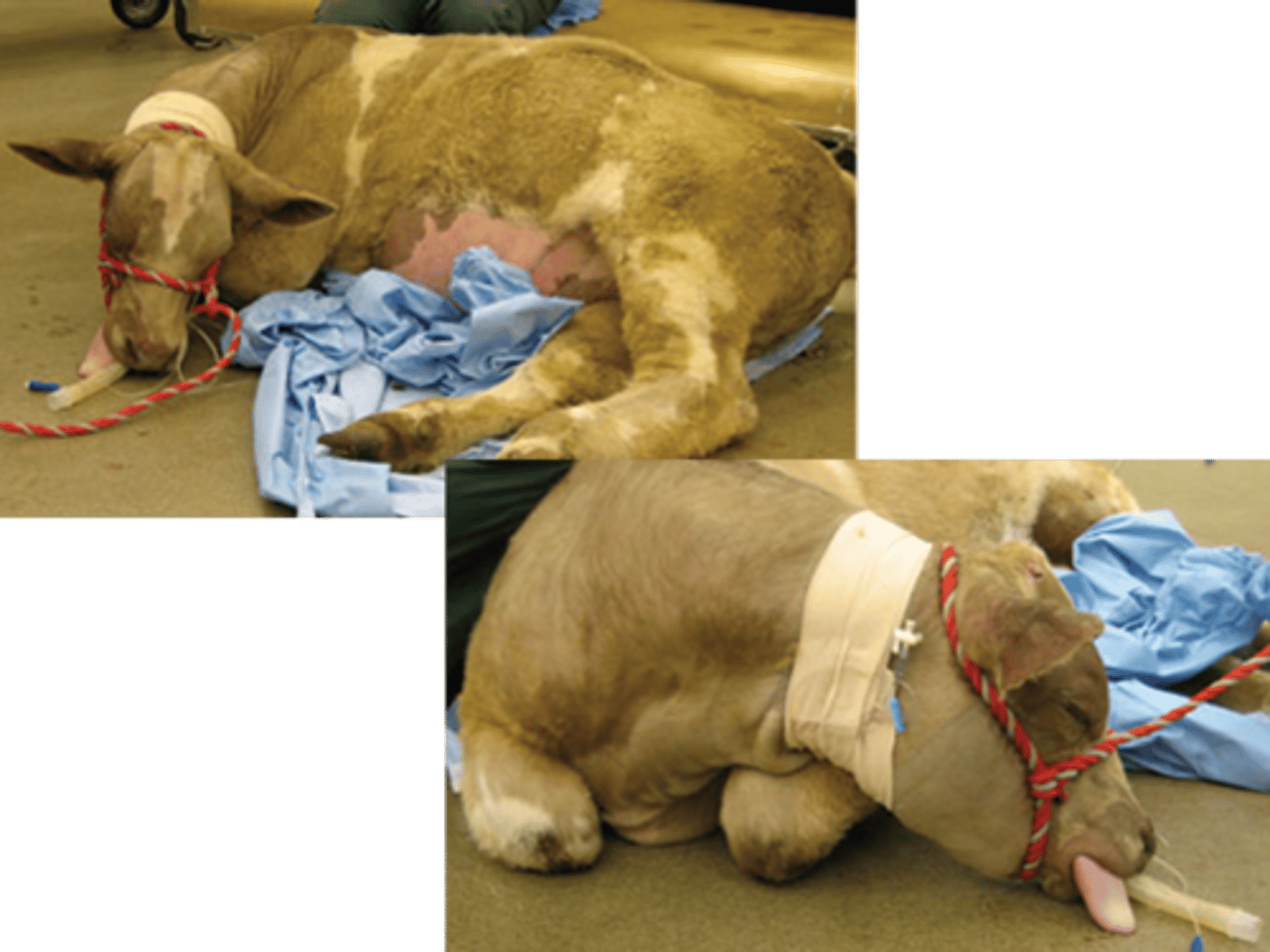
During recovery in ruminants, the head is positioned so that the pharynx is
higher than the mouth, thus allowing for drainage of saliva and regurgitation
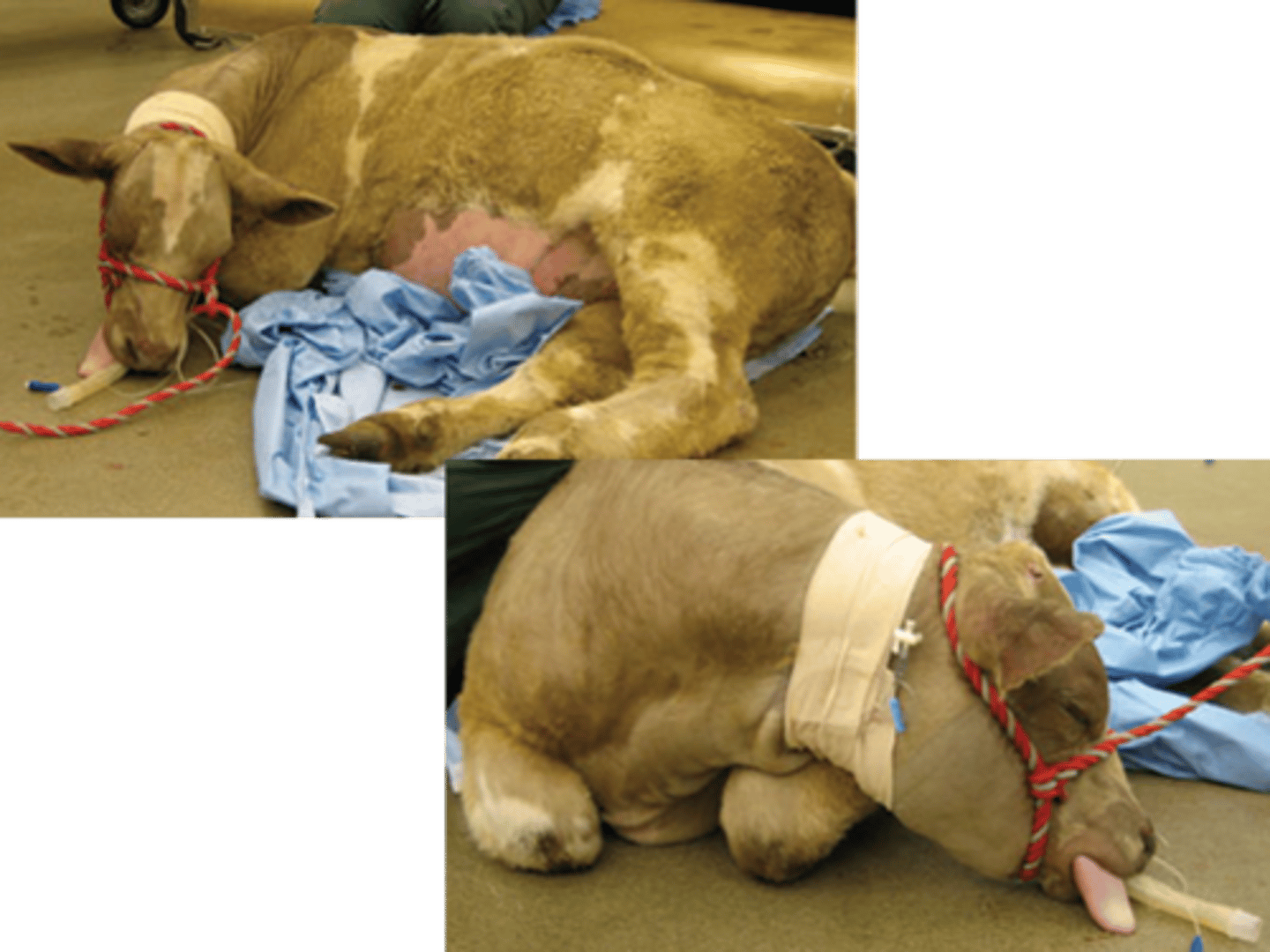
During recovery in ruminants, folding the front limbs
underneath the patient makes it easier to keep them in sternal recumbency
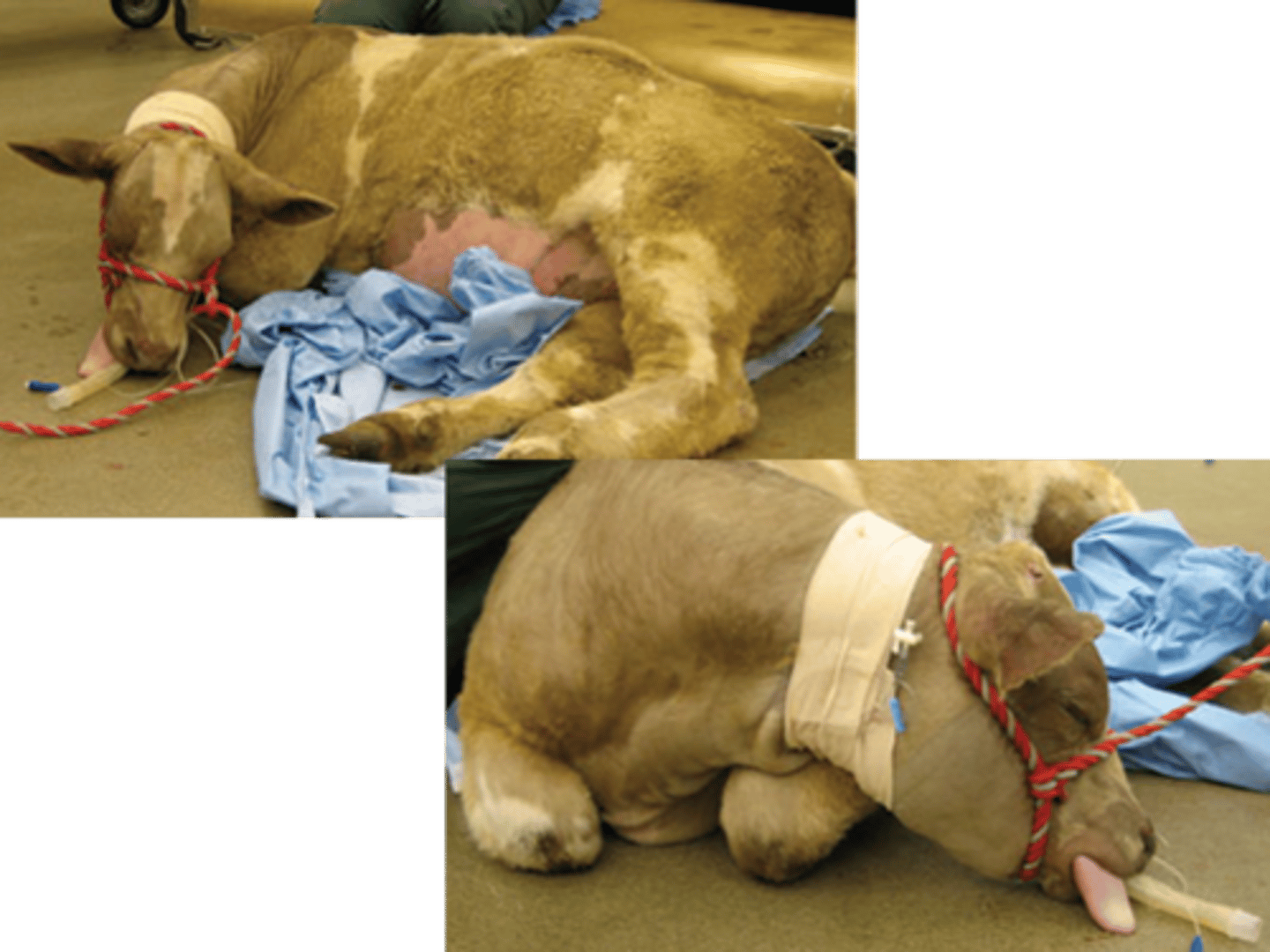
Camelid Anesthesia
•Llamas and alpacas require anesthesia similar to that of small ruminants
•Copious saliva production even when anesthetized
•Have the ability to chew cud
•Prone to developing nasal congestion when in lateral or dorsal recumbency
•Obligate nasal breathers can develop upper airway obstruction during recovery
•Pseudoruminant
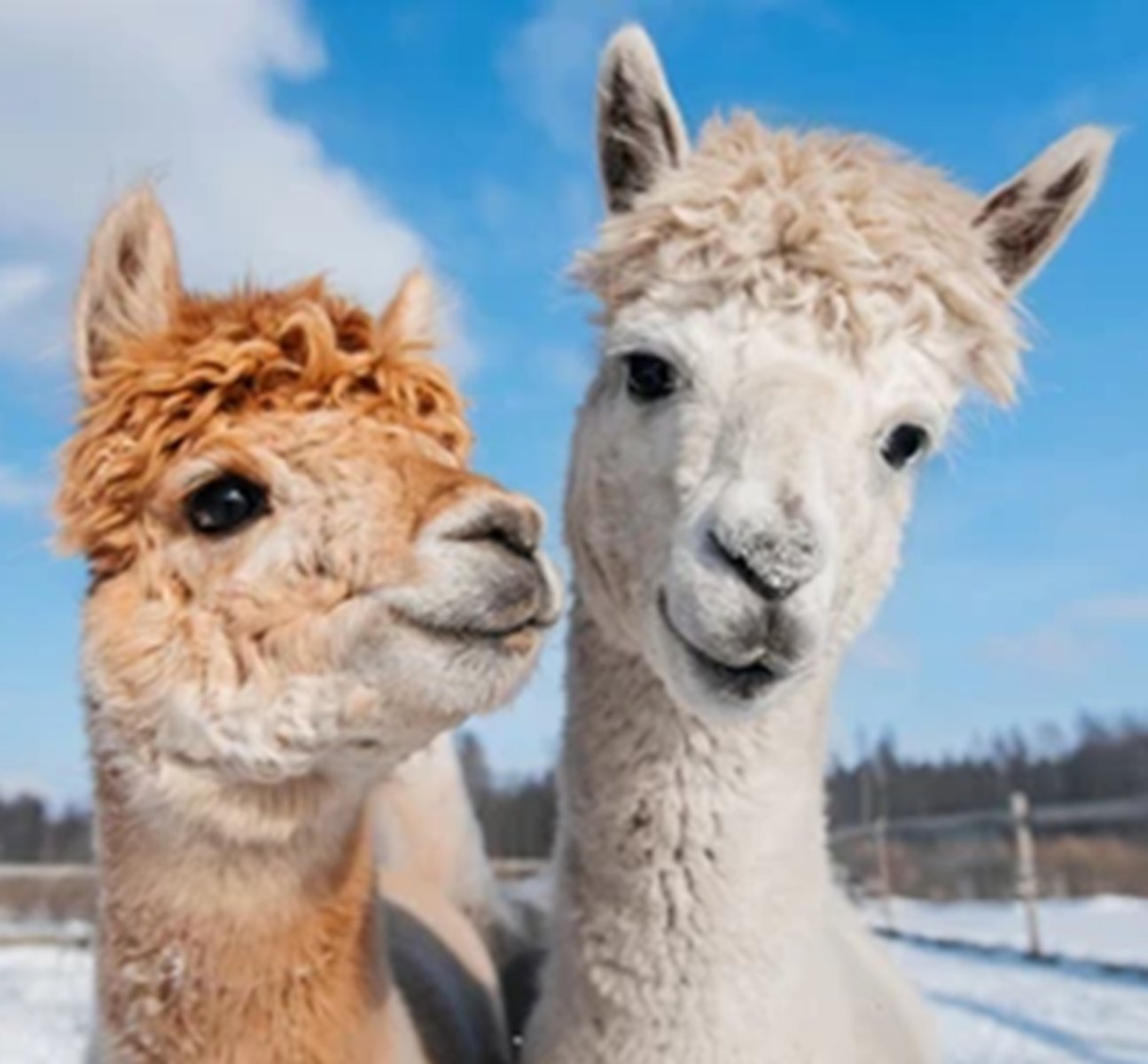
Pseudoruminants
have a three-chambered stomach similar to ruminants but with some key differences
Llamas and alpacas require anesthesia similar to that of small ruminants
Not TRUE ruminants, the first stomach compartment plays a similar role to the rumen
Camelids have the ability to chew cud
Common to find food material in the oral cavity at induction
1. C1 = rumen
2. C2 = reticulum
3. C3 = abomasum
Camelid Digestion
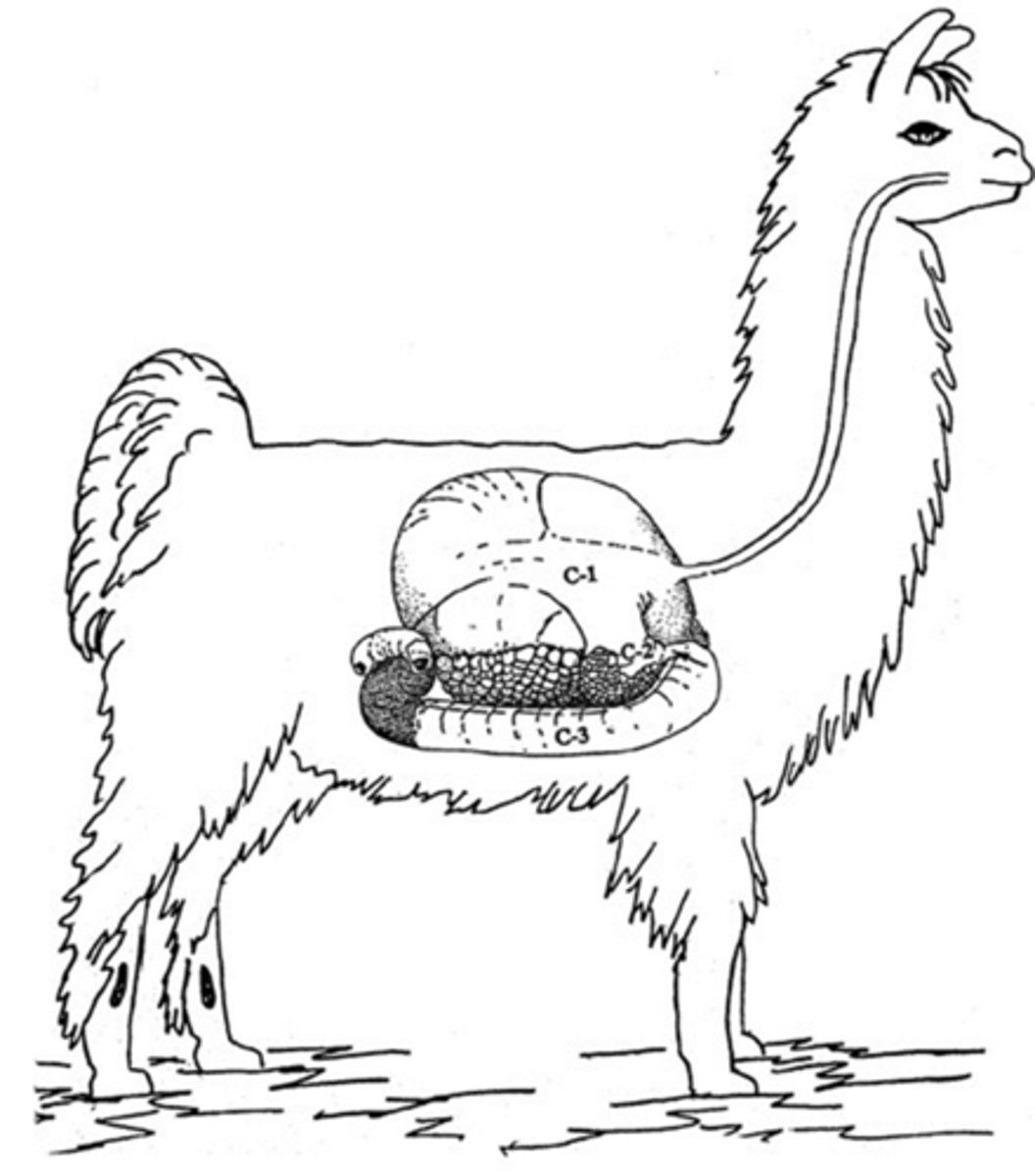
Patient Preparation
•Same as for small ruminants
•IV catheters commonly placed in jugular or cephalic veins
•Thick and tighter neck skin makes IV placement challenging
Patient Preparation: Thick and tighter neck skin makes IV placement challenging
•Also makes it a little easier to mistake the carotid artery for the jugular vein
•If a hematoma forms due to unsuccessful venipuncture, postponement of a non-emergency procedure for 24 hours may be advisable
•Tight skin tends to compress the hematoma inwards, leading to possible tracheal compression and partial obstruction
Postponement of the non-emergency procedure will allow the
hematoma to resolve some
1. Llama neck in cross section
2. Jugular and carotid can be accessed from the same angle
3. Occlude and let it fill, then it up and re-occlude to watch it fill again and confirm placement
4. Arteries have pulses
5. Trachea right nearby for compression/obstruction if hematoma present
What are the considerations of the camel and their anatomy?
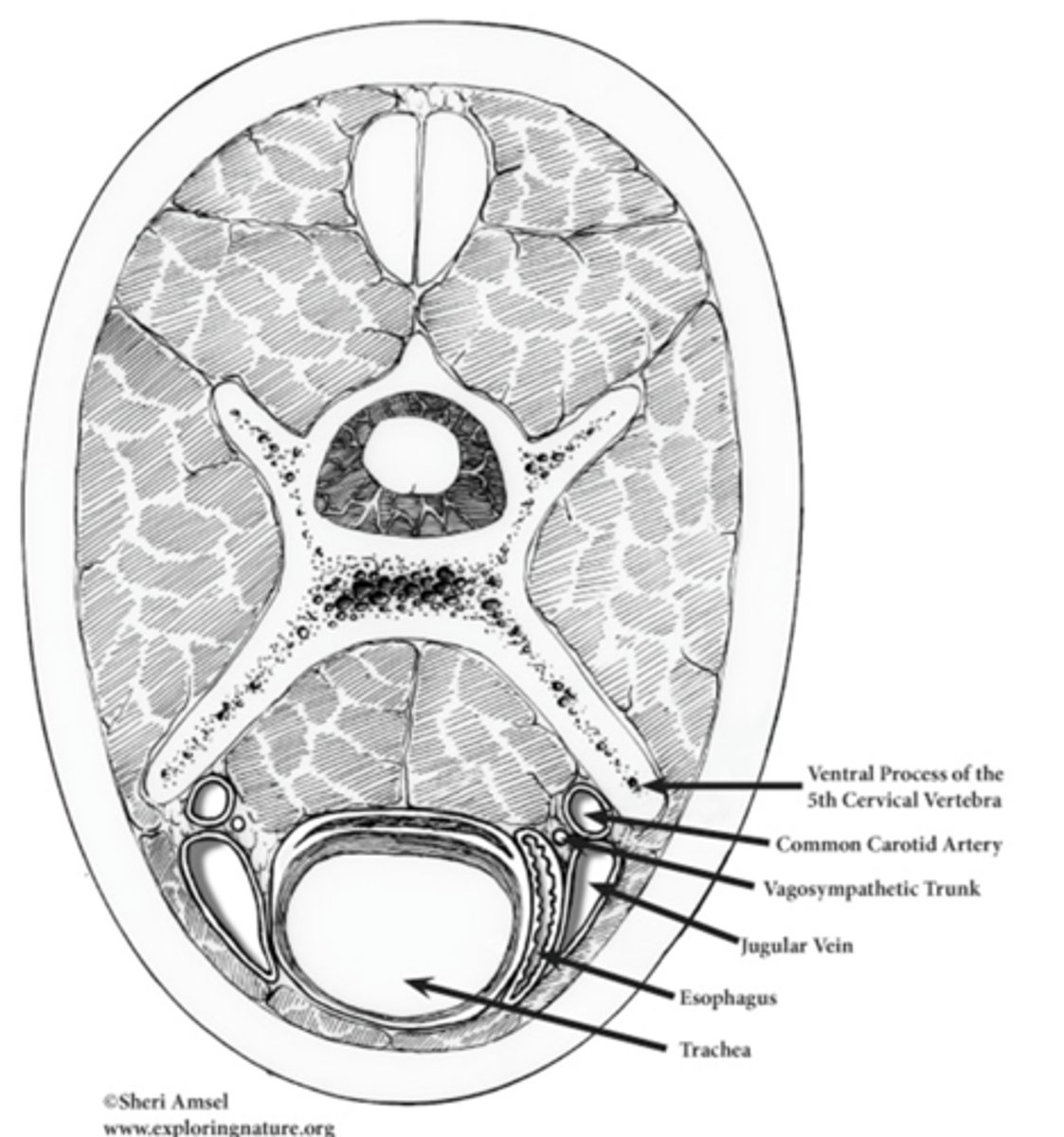
Protocol, Procedure, and Maintenance
•Protocol same as for small ruminants
•Aggressive camelids may be resentful of restraints
•Ventilation easier to maintain; some may require mechanical ventilation
•Heart rate more variable than ruminants
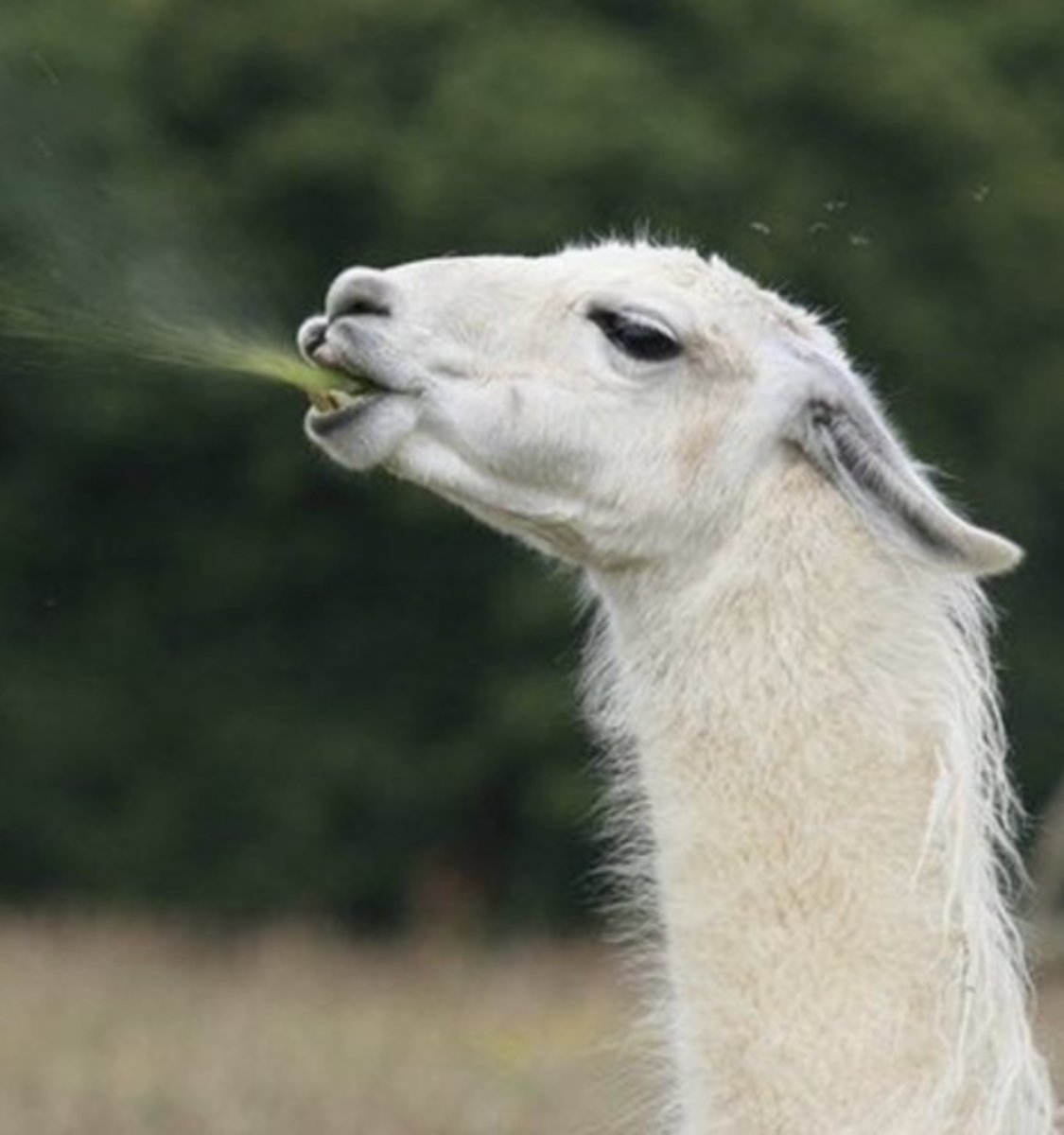
Aggressive camelids may be resentful of restraints
May require sedation
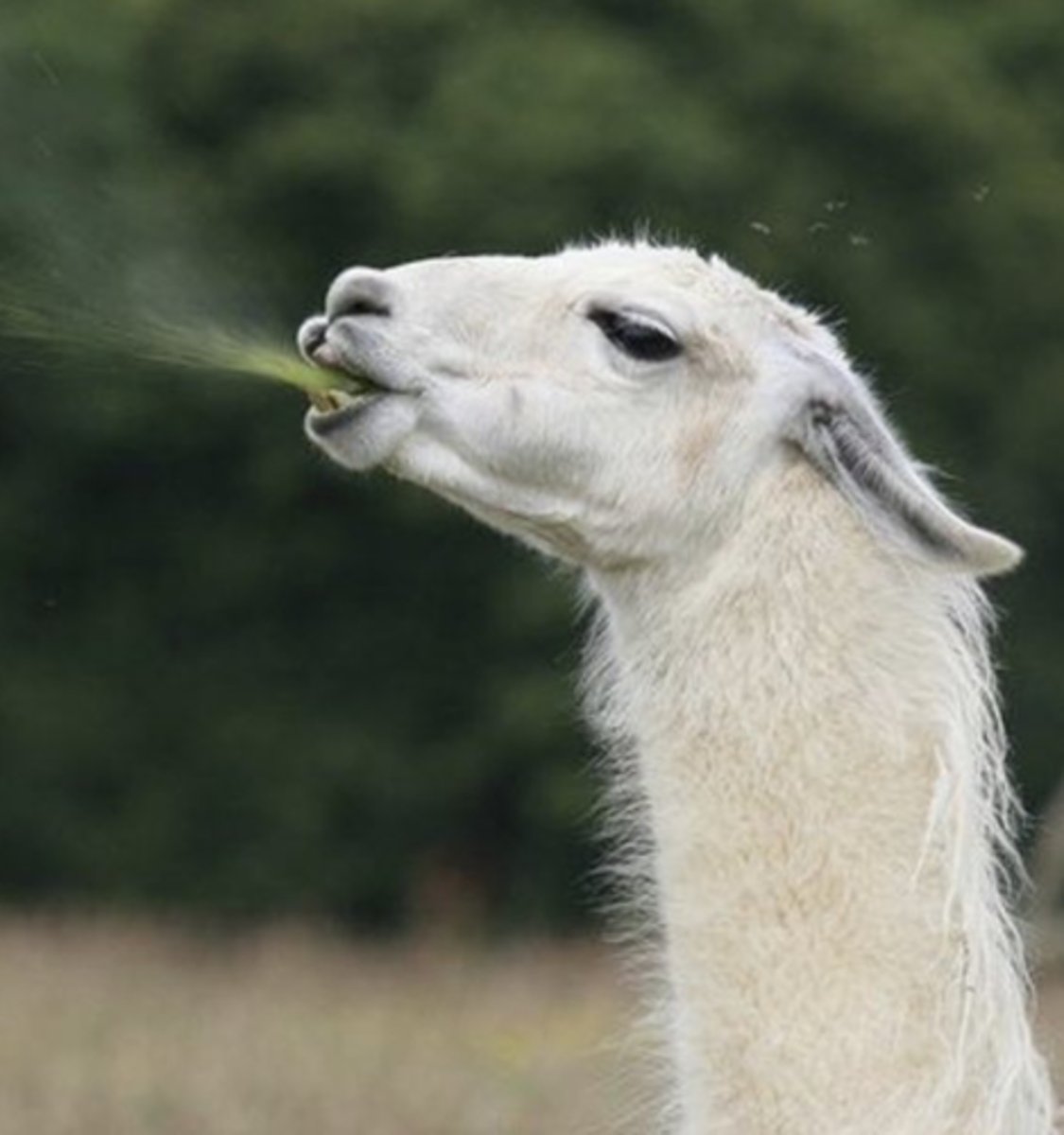
Heart rate more variable than ruminants
Treat bradycardia with glycopyrrolate or atropine
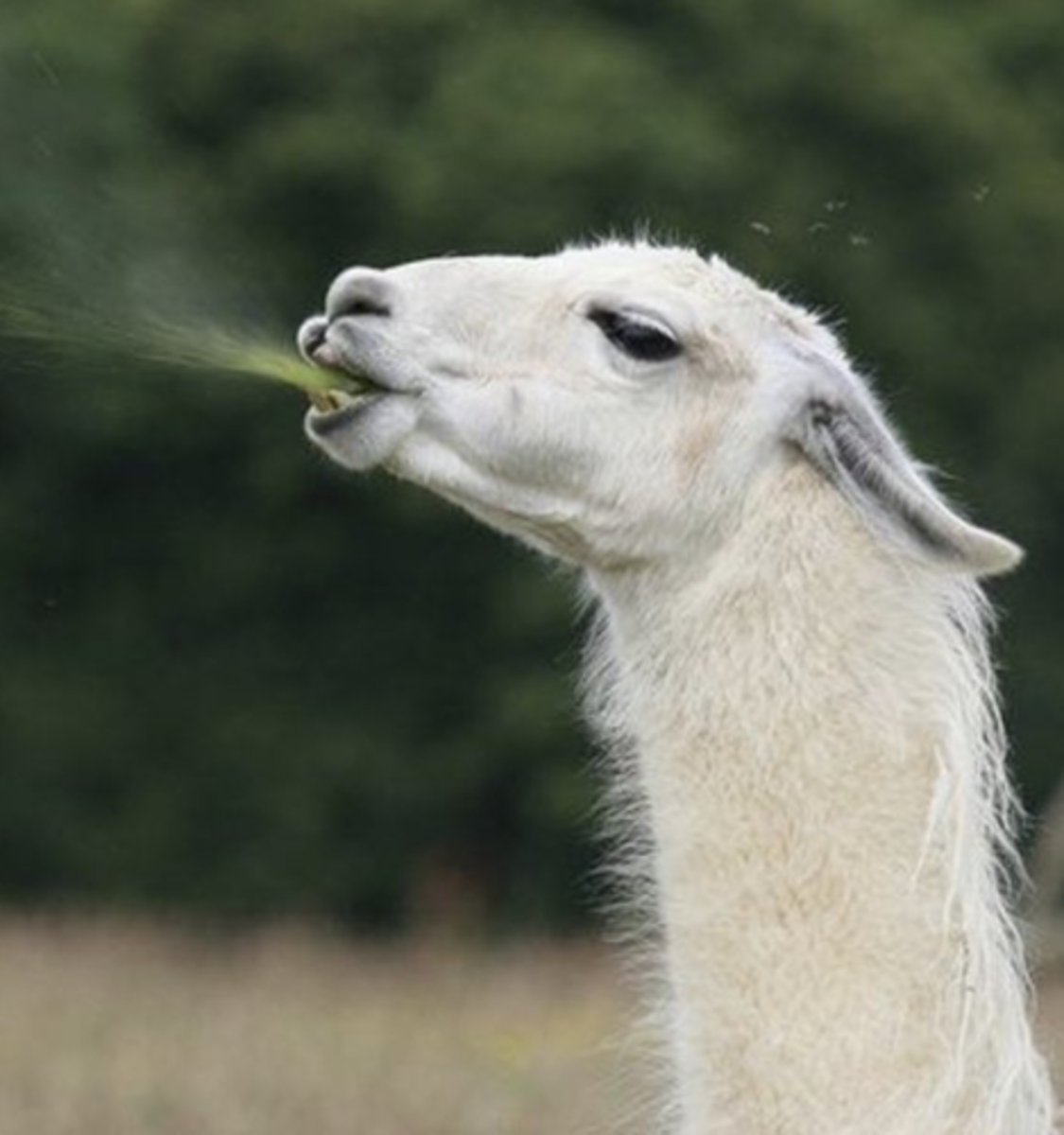
Protocol, Procedure, and Maintenance Considerations
1. Llamas and alpacas spit
2. Usually begin with ears back and chin up as a warning
3. If you don't get the first hint, usually just blow air and saliva
4. If you STILL don't get the hint, will regurgitate stomach contents up to 10 feet
5. After spitting regurgitus, usually hang their mouth open and drool bc they don't like the taste of it
6. Maintain at 1.5 - 2.5% isoflurane
Camelid Patient Positioning
•Take care with the long, flexible neck in induction, positioning and recovery to prevent injury
•Protect the large and prominent eyes
•Position head to drain saliva and regurgitates
•Mouth lower than the level of the pharynx
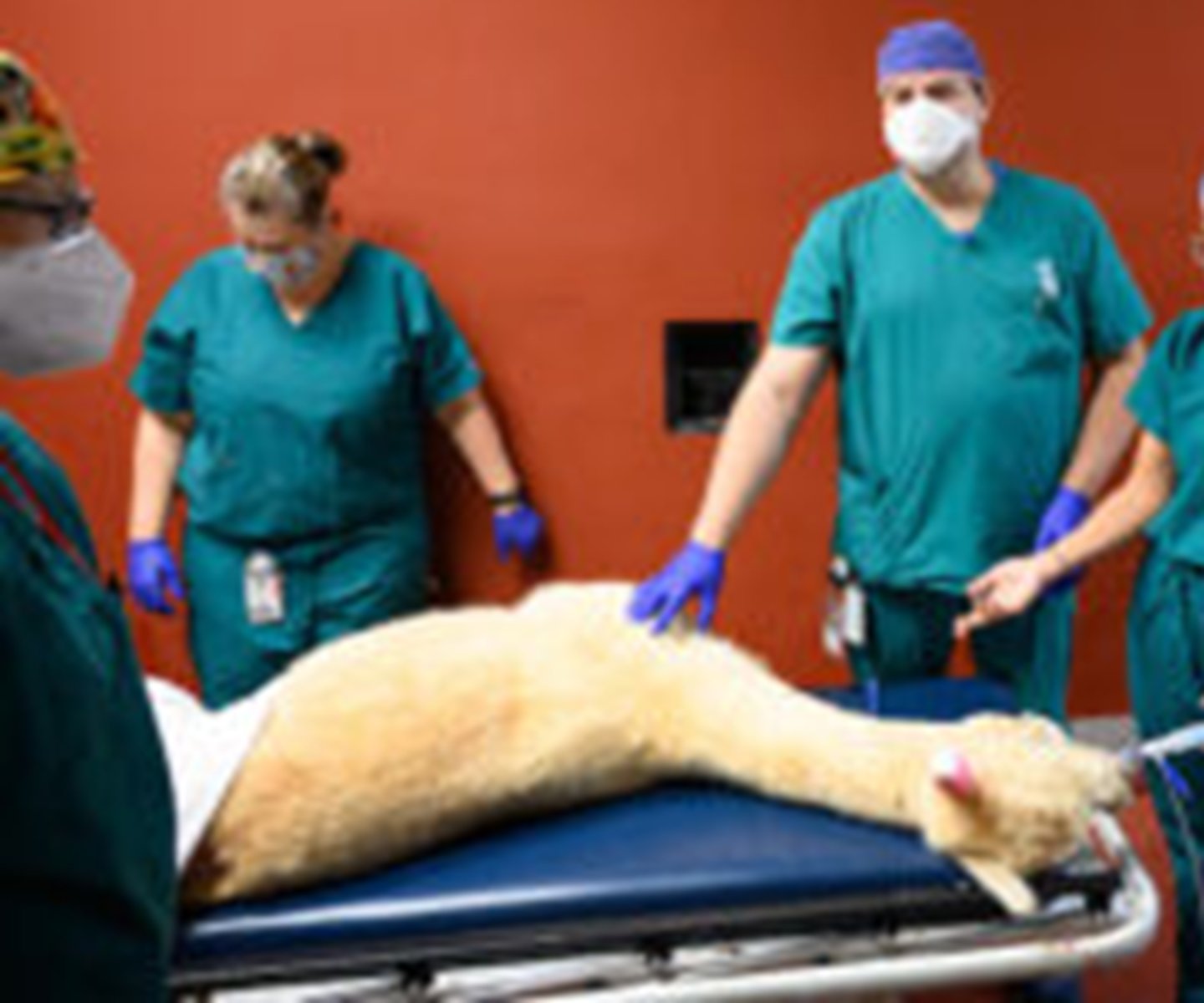
Camelid Recovery
•Sternal recumbency recommended
•The head and neck should be held upright in normal position
•For labored breathing or if stridor is evident, oxygen can be delivered via a face mask
•Treat dyspnea with nasal tubes
Camelid Recovery: Head and neck should be held upright in normal position
Promotes venous drainage of any upper airway congestion that may have developed during the procedure
Camelid Recovery: Treat dyspnea with nasal tubes
•Advance small ET tube into the ventral meatus of one or both nostrils until passage of air is felt through them
•If obstruction is not alleviated, the attending veterinarian should be notified immediately
•EMERGENCY! Reintubation or tracheostomy
Like ruminants, camelids tend to remain calm and rarely
require sedation in the recovery period
1. Sternal Recumbency: hold the head and neck upright in a normal
2. Neutral position until the patient is extubated and able to hold its own neck up.
3. Right = nasal tubes
What kind of position do camelids sit in during the recovery process?
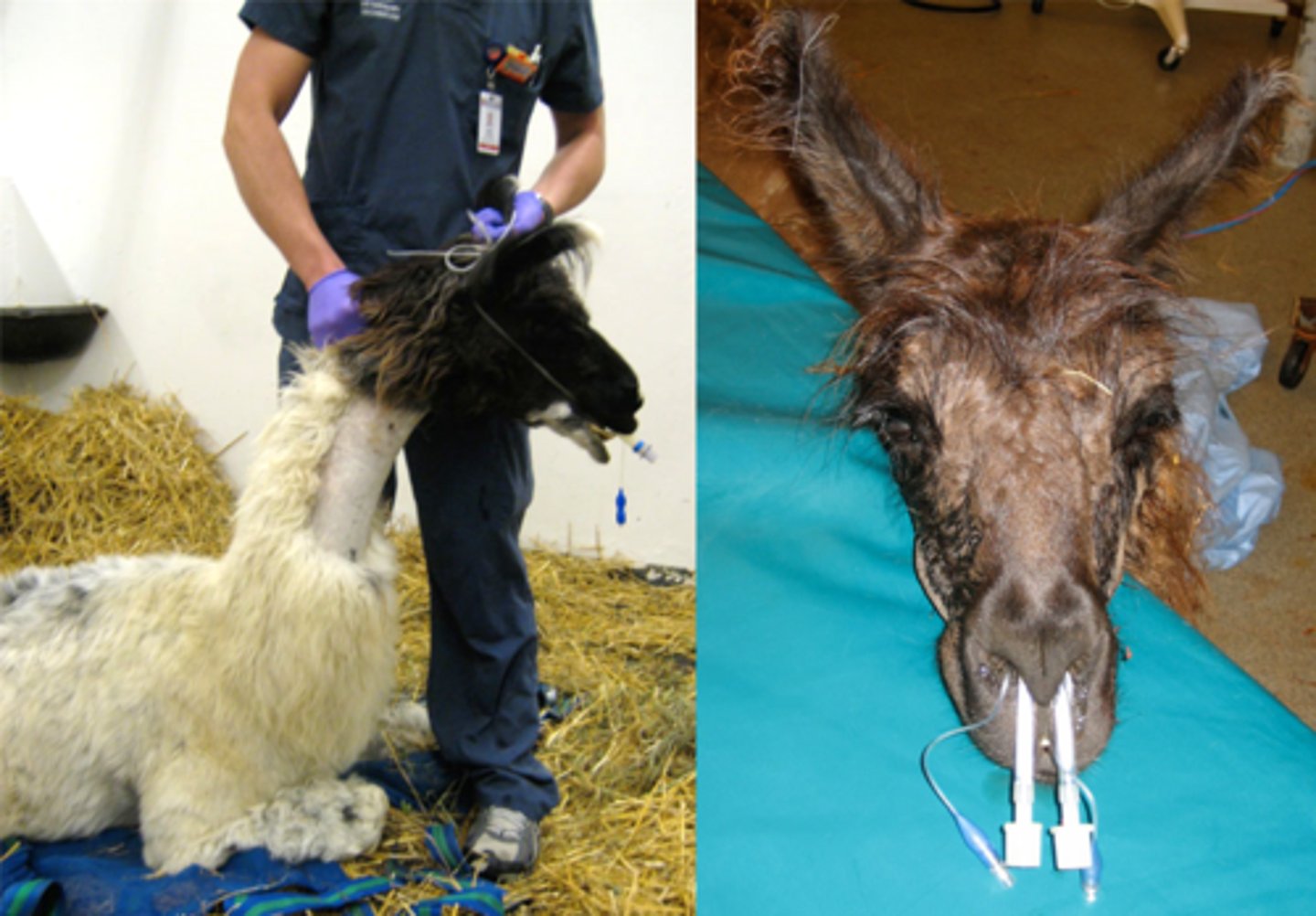
Swine Anesthesia Physical Examination
•Challenging to restrain, sedate and anesthetize due to unique species characteristics
•General observation
•Rely on patient history to determine health status
•Assessing cardiovascular status and drawing blood samples are difficult to impossible
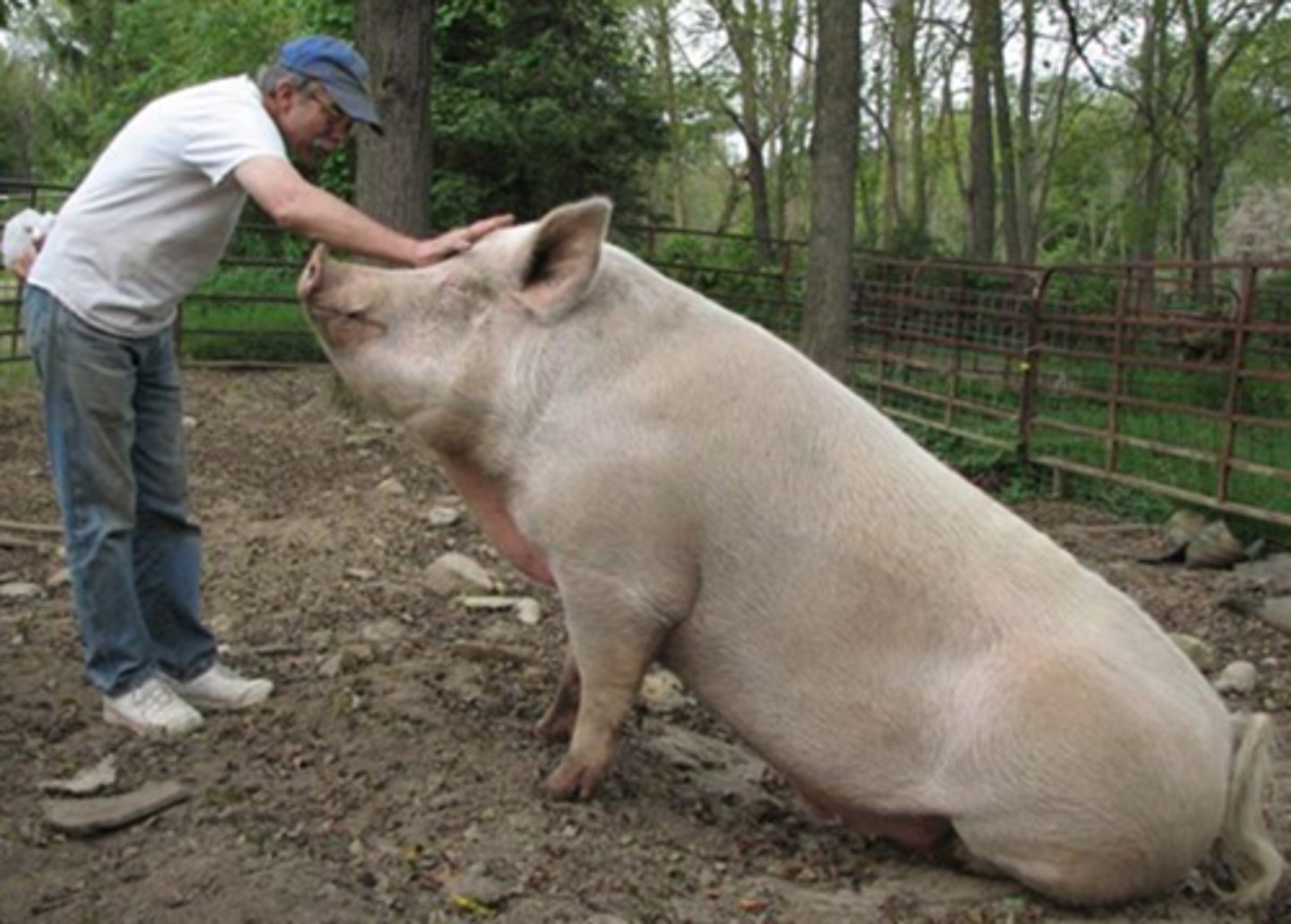
Challenging to restrain, sedate and anesthetize due to unique species characteristics
Physical examination, sedation, IV catheterization and intubation more difficult than most other species
Swine Anesthesia General observation
•Assess respiratory rate and character
•Observe obvious problems (ex: nasal discharge)
In swine anesthesia, assessing cardiovascular status and drawing blood samples are
difficult to impossible due to squealing and non-accessible peripheral vessels
Physical examination on pigs, besides general observation, is impossible due to the
overall anatomy and restraint difficulty
Pigs typically squeal in protest when
restrained making thoracic auscultation impossible
While we could "force" them into restraint it will cause
extreme stress to the animal and the handler
Swine Premedication or Sedation
•Sedatives administered IM
•No easily accessible peripheral veins
•Thick layer of subcutaneous fat
•Must use at least a 1.5-inch needle
•Inject muscles of the neck caudal to the ear and 3-5 cm lateral to the dorsal midline
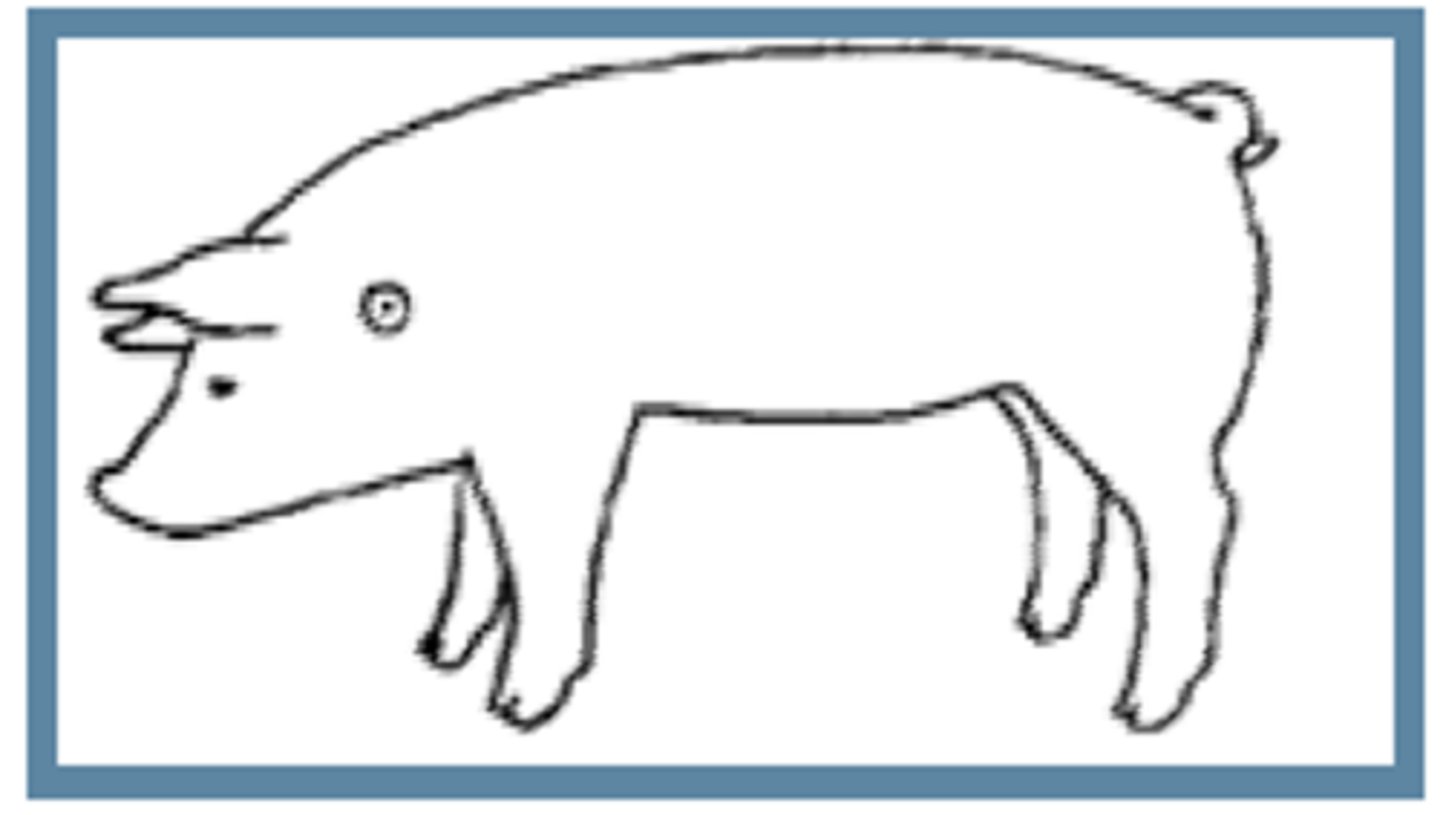
Swine Pre-Med or Sedation location described on the
neck is the most accessible site for IM injection in swine
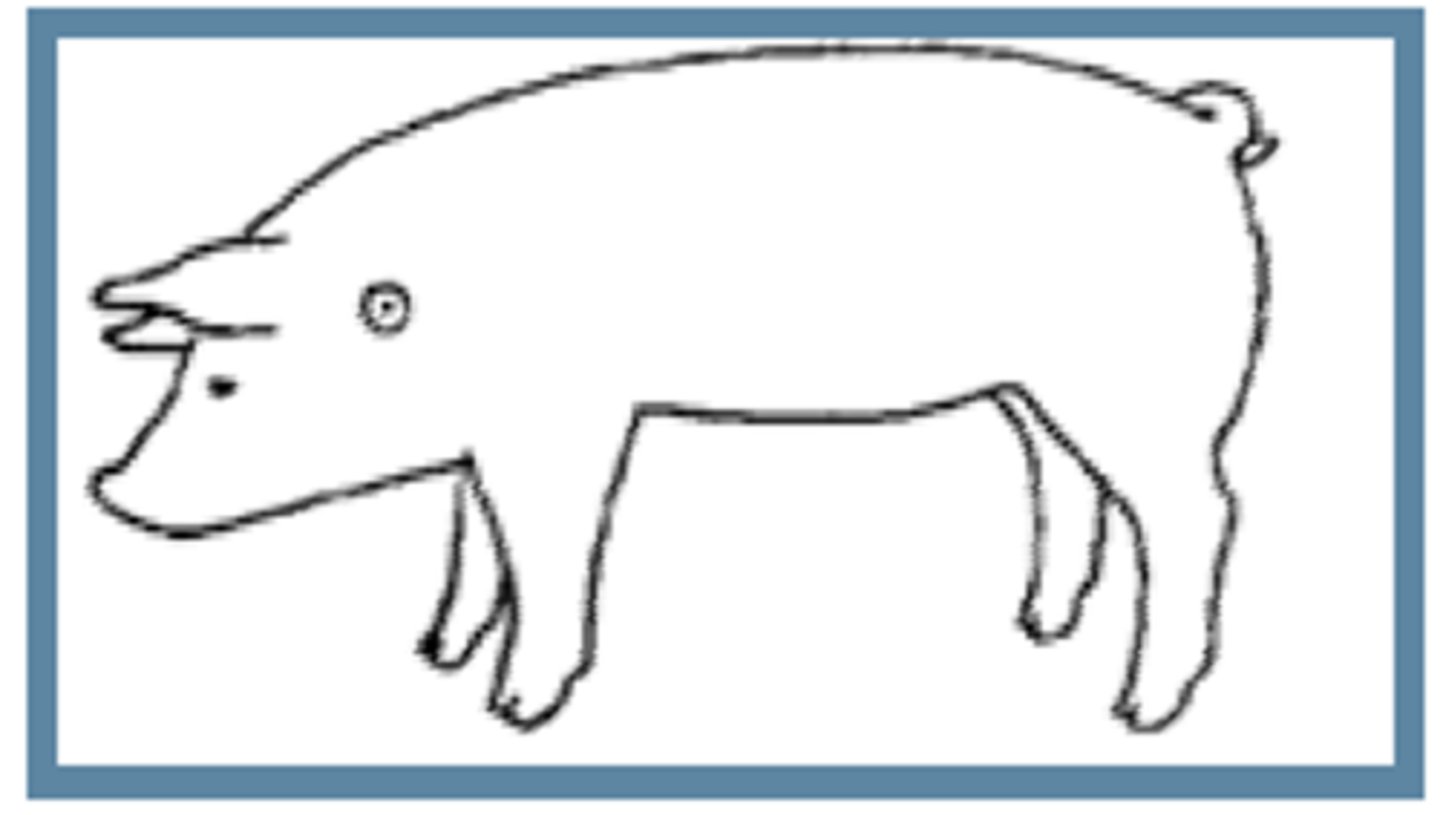
Swine are resistant to sedative drugs
•Use a combination of a tranquilizer or sedative, an opioid, and a dissociative
•Drug combinations using a dissociative may produce sedation enough to perform short surgical or nonsurgical procedures
•TKX: Telazol®, ketamine, and xylazine

Telazol® =
Tiletamine and Zolazepam

Ketamine and Tiletamine are dissociative
1. Pig 15 minutes after IM injection of TKX
2. Blood on the neck was where the IM injection was placed
